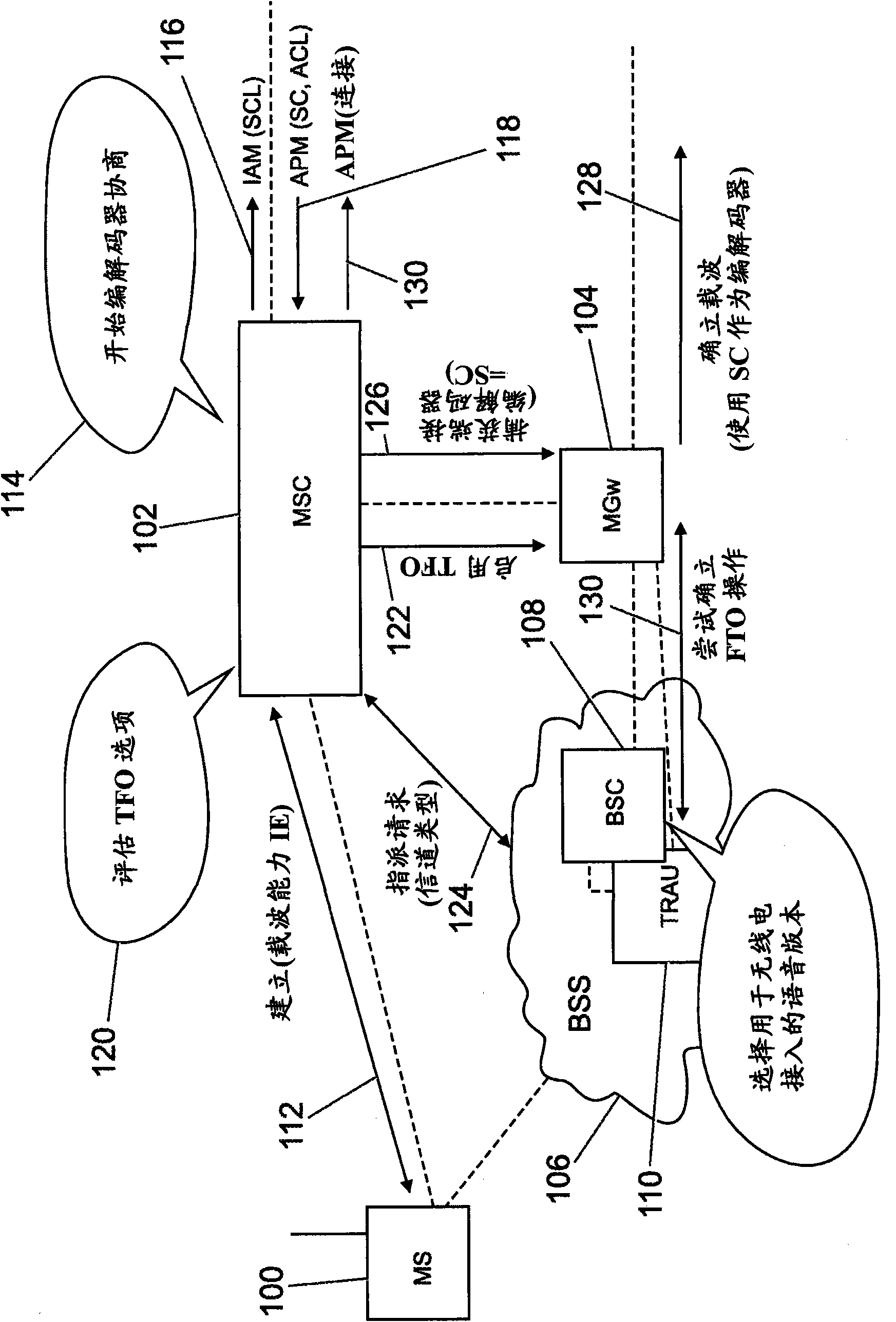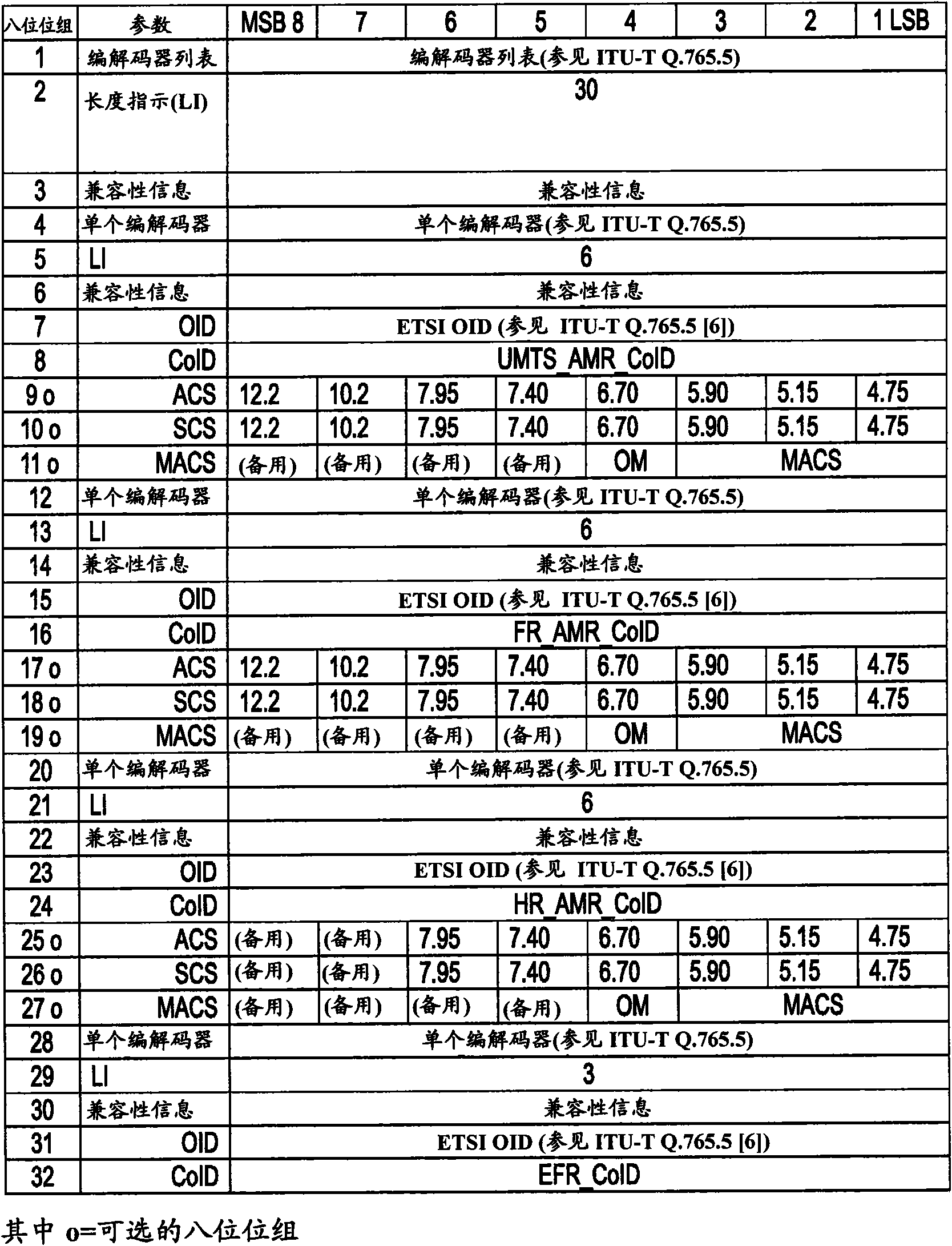Improvements in or relating to codec negotiation and selection
一种编解码器、无编码的技术,应用在无线电接入网领域,能够解决失败等问题,达到防止过度供应的效果
- Summary
- Abstract
- Description
- Claims
- Application Information
AI Technical Summary
Problems solved by technology
Method used
Image
Examples
Embodiment Construction
[0039] figure 1 The call setup procedure for a GSM mobile originated call for a call without transcoding operation is shown. figure 1 Mobile station 100 is shown in communication with a mobile switching center (MSC) server module (MSC-S) in MSC 102 (not shown itself). The MSC is in communication with the media gateway module 104 and the base station system module (BSS) 106 . The BSS includes a base station controller node or module (BSC) 108 and a transcoding unit (TRAU) 110 . A call originates from a mobile station (MS) 100, which may also be referred to as a GSM terminal. A GSM terminal communicates with its associated MSC-S through the BSS and BSC. The originating GSM terminal indicates the supported codec type (oMS-SCL: originating mobile station supported codec list) to the MSC-S in the message. exist figure 1 Within the schematic, dashed lines show some of the physical connections between the various modules. It will be recognized that there may be more physical co...
PUM
 Login to View More
Login to View More Abstract
Description
Claims
Application Information
 Login to View More
Login to View More - R&D
- Intellectual Property
- Life Sciences
- Materials
- Tech Scout
- Unparalleled Data Quality
- Higher Quality Content
- 60% Fewer Hallucinations
Browse by: Latest US Patents, China's latest patents, Technical Efficacy Thesaurus, Application Domain, Technology Topic, Popular Technical Reports.
© 2025 PatSnap. All rights reserved.Legal|Privacy policy|Modern Slavery Act Transparency Statement|Sitemap|About US| Contact US: help@patsnap.com



